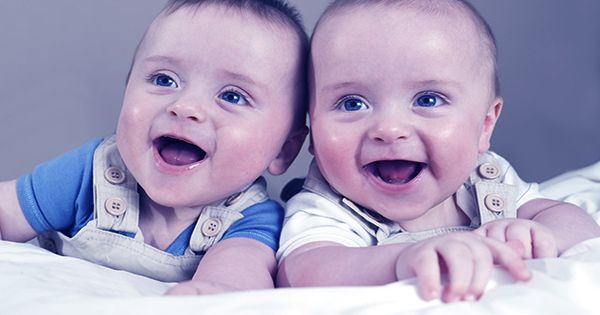Identifying twins, more accurately known as monozygotic twins, are the result of a single fertilized egg splitting into two embryos. As a result, it is assumed that their genetics are the same and that any differences between a pair must be environmental. A new study found that less accurate than thought, some twins were not shared by partners with a number of mutations. Considering that the “nature vs. nurturing” debate has been led by thousands of dual studies, it could be more than just scientific curiosity.
Mutations that cause cell division occur when we evolve from the first organism, so naturally, there are some twins, many of which appear after embryo separation. Most comparisons between monozygotic and dizygotic (fraternal) twins, however, consider the matter very little from transformation.
Dr. Hákon Jónssonof DCOED Genetics, Iceland, attempted to investigate mutation rates by modifying the genomes of members of both 387 pairs of monozygotic twins, as well as sequences from their parents, children, and even husbands. On average in Nature Genetics, Jónssonof and co-authors report that each pair of pairs undergoes an initial development of 5.2 which occurs in one but not in both cases, as well as a larger number appearing later in life. Many of these mutations will be in genes where their effects are difficult to detect. Others are not and may be responsible for some of the differences previously held with the environment. The paper cites autism as a condition sometimes seen in only one monozygotic twin that may be mutated rather than environmentally.
More interestingly, the authors found across 15 percent of the genome differences that occur fairly frequently. There was more than 100 present in this subset than the number of twin-specific mutations following the hour curve that appeared in just one pair, much higher than the rest, increasing the probability that some could make noticeable differences. These results also shed light on the time of change, as both pairs would share what happened before evolution.
Many monozygotic pairs follow the same national life path, such as newly elected U.S. Senators Mark Kelly and Scott Kelly, both of whom became astronauts, giving NASA a great opportunity to study the effects of a pair in space and longer bodyweight loss earth. Yet some are surprised at their differences in twin personalities or talents. It is usually blamed on the environment, perhaps expressing a deliberate desire to separate siblings. However, new research by Johnson and co-authors suggests that the contribution of mutations did not diminish during early development.
If so, some research may require some re-analysis. Measures such as intelligence or sexuality show how much difference there is between monozygotic twins and this compares to differences between dizygotic twins. If the monozygotic gap is entirely environmental, the argument goes, the greater the extent of the dizygotic variation, the greater the contribution of genetics. However, if the monozygotic difference contains a mutation-driven genetic material, it may complicate the seemingly straight-forward test.















